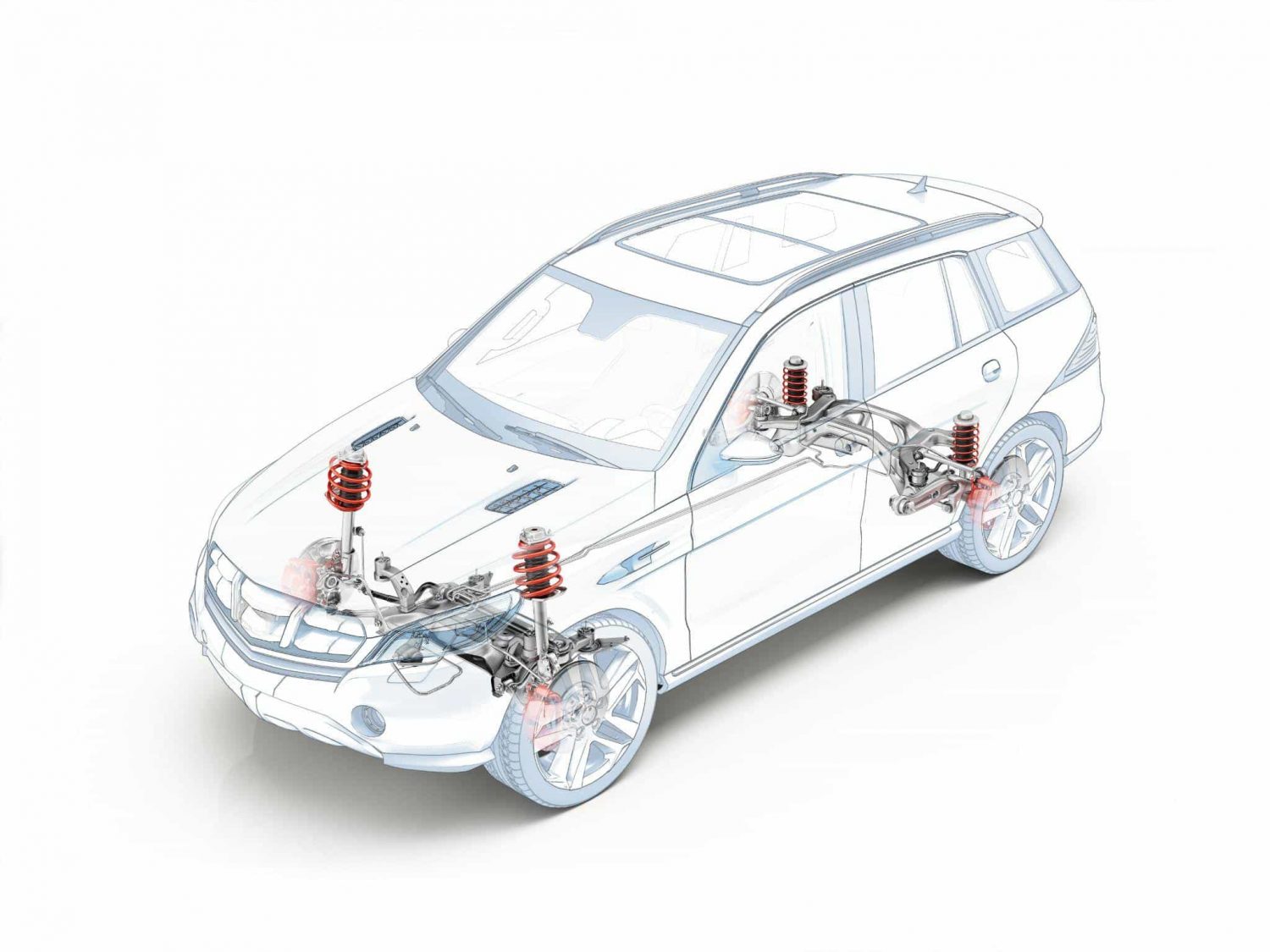As drivers, it’s essential that we not only have a safe vehicle that runs well and gets us where we need to go but one that’s comfortable too. Enter airbag suspension, a mechanism that is bristling with a plethora of vehicular improvements. The air suspension market is highly valued in the automotive industry. with its value estimated at around $4.3 million at the end of 2017.
But what is air bag suspension, and what are its benefits? In this article, Safety Restore walks you through all this and more.
What is Airbag Suspension?
Airbag suspension is a form of vehicle suspension. In this case, it uses airbags to adjust the height and stiffness of a vehicle’s suspension. Typically, air suspension is powered by electric pumps or compressors, and it puts air into the flexible bellows, typically made from reinforced rubber. Airbag suspension differs because it’s the same system, but the medium comes as airbags.
Air suspension aims to give drivers a smooth and consistent quality in their vehicles. Although in many cases, sports suspension features too. Also, air suspension is used instead of the standard steel spring suspension in heavier vehicles, like trucks.
Benefits of Airbag Suspension
Improved Ride Quality
The driver has greater ride comfort due to a substantial noise reduction and the harshness of the motion and vibrations. These sensations can cause fatigue, making the driving experience less tiring. Also, air suspension is better for the road surface, which makes higher corner speeds much more fluid.
Adjustable ride height
Depending on the load and weight of the vehicle, air suspension drastically improves the ride height capacity, not just this but also the speed. Air suspension systems generally optimize the ride height, depending on the truck’s speed. There is usually less weight on unladen trucks and, therefore, less on the suspension. A lower ride height is better for a truck’s aerodynamics due to less wind resistance.
Increased load capacity
Your load capacity becomes more versatile too. Fragile loads such as sizable panes of glass benefit from being transported on a truck with air suspension, as this lowers the risk of damages. You can also increase your capacity, both in the number of units and in its capability for carrying different types of materials.
Enhanced towing capabilities
As stated earlier, air suspension is perfect for big vehicles like trucks. Less vibration and general roughness make it easier for big-haul tasks like towing and even grant you some enhanced capabilities.
Reduced wear and tear on tires and suspension components
When you have a more effective suspension, this leads to less vibration. Ergo, your vehicle will be bumping up and down during travel much less. This means other components, such as suspension mechanics and tires, last longer.
Drawbacks of Airbag Suspension
Higher cost compared to traditional suspension systems
The first consideration is that it costs a considerable sum to install airbag suspension ($200-800 per Airbag, according to Autotrends), which is just the price of the materials. Labor costs extra, of course. You could look at a couple thousand compared to traditional suspension systems.
Additional maintenance requirements
Airbag suspension requires a lot of additional maintenance. It’s not a set-it-and-forget-it situation at all. The system is complex, expensive, and needs regular checkups!
More complex installation process
The greatest drawback of all is the installation process. It requires a reliable team to drill holes to mount the compressor, tank, and manifold. Plus, there are likely to be space issues with smaller vehicles like cars or light-duty trucks. But you’re in luck! Air suspension kits have reduced the need for drilling and cutting somewhat.
Potential for air leaks or system failure
When you’re on the road, airbags go through the wringer, resulting in inevitable leaks that are mostly unavoidable (unless you have high-quality airbags). If this happens on the road, or worse, burst, it could damage your brakes and lead to a system failure. If this happens, you could lose control of your vehicle and have an accident.
How Does Airbag Suspension Work?
So, how does airbag suspension work and what are the components of airbag suspension systems? Let’s take a look.
Components of Airbag Suspension Systems
● Airbags
Airbags are a key component (are you surprised?). A simple rubber compartment that contains the air. They use compressive elements of air (no pun intended) and rubber to alter the suspension height.
● Air Compressor
The air compressor is the primary source of air supply in your suspension. It gathers atmospheric air into the pump, taking it to the appropriate pressure (240 MPa). It uses a desiccant to absorb the air, which is then recycled into the system.
● Valves
Valves, such as those controlling height control, detect changes in the axle height. It gets attached to the vehicle’s frame with an L-shaped linkage connecting the height control to the axle. Then when the axle moves up and down, the linkage traverses the valve.
● Control Module
Control modules, such as solenoids, are in electronic air suspension systems. The mechanic works like this: the control linkage moves up and down, and electronic sensors transmit information to the electronic control unit (ECU), which is the central hub of command, in essence. They open or close solenoid valves as required per the vehicle’s movements.
Process of Airbag Suspension
The airbag suspension process works like this: first, the airbags inflate or deflate to adjust the ride height. This prompts the compressor to pump air into the airbags. Next, the valves will regulate the air pressure, depending on its current needs. Finally, the control module manages the airbag suspension system.
If you need more information about airbag suspension or want to get yours installed/repaired, contact Safety Restore today!
Frequently Asked Questions
● What are the benefits of airbag suspension?
Increased ride quality, adjustable ride height, increased load capacity, enhanced towing capabilities, and reduced wear and tear on tires and suspension components.
● How much does airbag suspension cost?
$200-800 per Airbag, plus installation costs. Likely, at least between $1500 and $2000.
● Is airbag suspension better than traditional suspension systems?
Airbag suspension provides more benefits than standard suspension but costs much more and requires much more maintenance.
● Can airbag suspension be installed on any vehicle?
Yes, technically. Although depending on your vehicle, the level of expenses will differ, or the process will be more complex.
● What are the maintenance requirements for airbag suspension?
Again, it depends mainly on the vehicle. But generally involves draining the condensation in your air tank, using antifreeze in harsher conditions, checking the lock collars (if you have them), and ensuring all your air lines are secure. Plus, a once-over after all is done.
● How long does airbag suspension last?
Each air suspension component lasts six and ten years or 90K to 150K kilometers. Over time, the rubber in the bag dries out.




